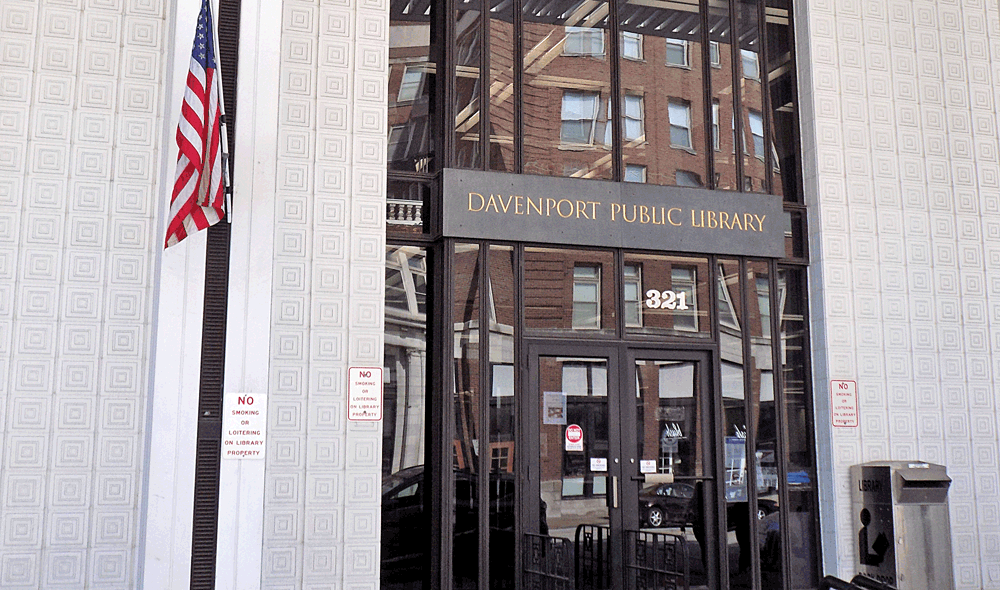
“I am seeking. I am striving. I am in it with all my heart.” —Vincent Van Gogh
You will have the pleasure of reading about Davenport, Iowa, and its history and attractions. On a recent book tour, I met with the mayor of Davenport, Frank J. Klipsch, who is on his second term. He and his wife have four grown children and 10 grandchildren. Four of the grandchildren have been adopted from Addis Ababa, Ethiopia. We had a pleasant conversation and he chose “A Song for Cecilia” for his reading pleasure. He said he wanted to learn more about the Orphan Train children.
Prior to 1673, Native American tribes, including the Sauk, Mesquaki, Sioux, and Potawatomi, lived in the Upper Mississippi Valley regions for a few months each year. The Santee Band of the Sioux was the last to negotiate a treaty with the U.S. government in 1851.
French explorers Louis Joliet and Father Jacques Marquette went down the Mississippi River in 1673. For the next 300 years, thousands of white settlers came to the Hawkeye State and found it lush and green. Its agricultural productivity stands today as one of the leading agricultural states in the Nation.
The first official white settlement began in June 1833 when the settlers came from Ohio, Pennsylvania, New York, Indiana, Kentucky, and Virginia. There was sufficient timber for construction of log cabins, but substitute materials had to be found for fuel and fencing.
Davenport was part of the Louisiana Purchase in 1803. The city was established in 1836 by Antoine LeClaire and named after his friend, Colonel George Davenport. The first settlers were mostly Germans. LeClaire was French and part Pottawattamie. In a journal by Major William Williams in 1849 it is noted that “The population is 1,100. The town has the appearance of a more ancient town and supports two lawyers, four doctors, seven churches. Two large steam flouring mills manufactures 620 barrels of flower (sic) per week, one steam saw mill. Eight or ten stores here, good ones, some groceries, 3 drug stores and one hotel.”
The main public library began in 1839 with the creation of the Carey Library Association. In the Davenport Gazette in 1853 it was noted that a reading room was opened. Control of the Library Association was entrusted to the women of the community.
It was the April 1900 election in Iowa that a vote was in favor of a public library tax to support the Library. It was the first election held in Iowa in which women were allowed to vote. The Carnegie Foundation gave a donation of $75,000 to build the Library which opened in 1904.
The Davenport population in 2016 was 102, 612. Davenport is on the west side of the Mississippi River.
In its annual report, the Davenport Public Library noted 228,737 books borrowed, and 301,018 in-house library use, and a total of value of services of $14,682,936.
St. Ambrose College was established in 1882 and admitted women as students in 1968. Its current president is Sr. Joan Lescinski, CSJ. St. Ambrose became a university in 1987. St. Ambrose is a private, liberal arts university affiliated with the Roman Catholic Diocese of Davenport. The campus is quite pastoral, quiet and lovely.
Its library has copies of some of my titles. Included is the memoir of my year living in Belfast, Northern Ireland for the Library’s Irish collections. “Souls: A Portrait of Belfast” is my memoir of living there for a year and interviewing more than 200 residents about The Troubles. I met with the Lord Mayor of Belfast, IRA and UDA members, and ordinary citizens.
Iowa was a quick jaunt on I-88 so it did not include an overnight stay. Weather was mild with sunshine and a perfect day for travel. Libraries included are the Bettendorf (Iowa) Public Library, the Rock Island (Ill.) Library, Northeast Iowa Community College, Moline and East Moline (Ill.) Libraries, Augustana College (Ill.) Library, St. Ambrose University Library, and the libraries in Davenport.


